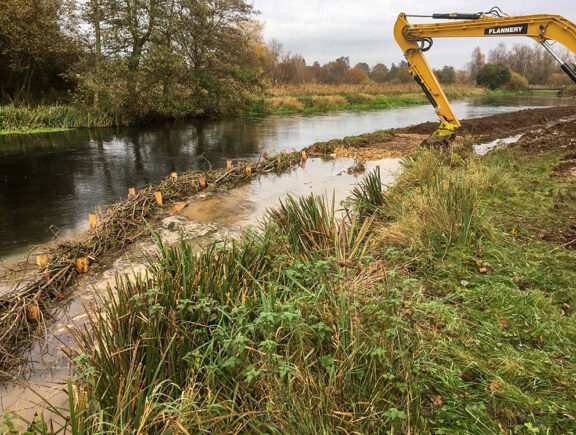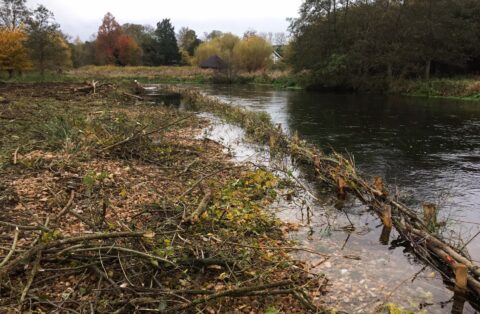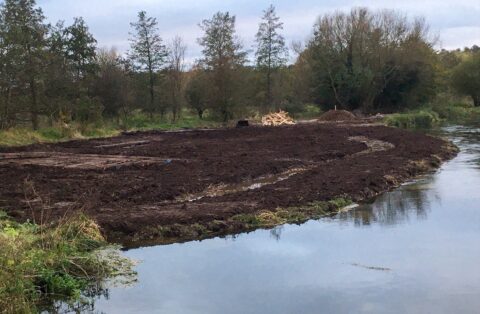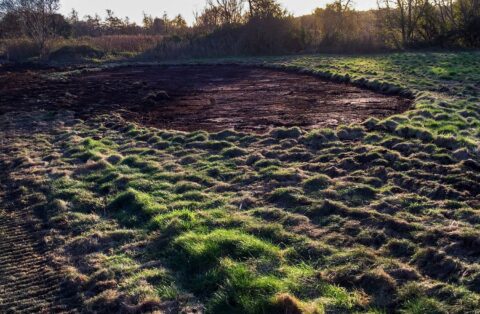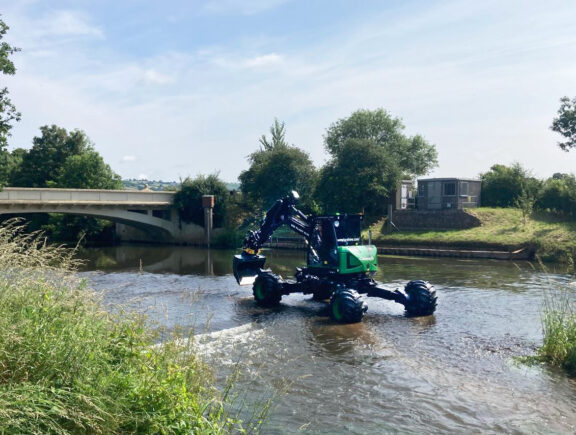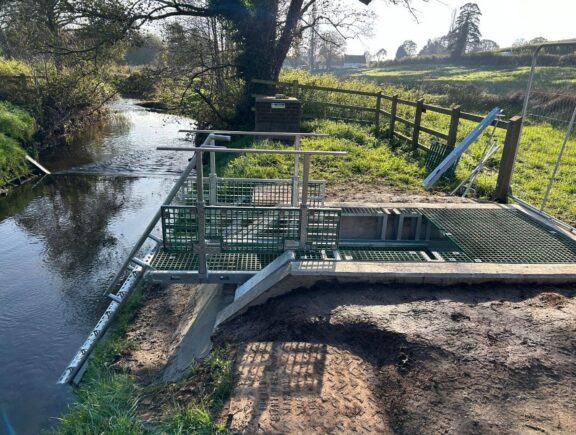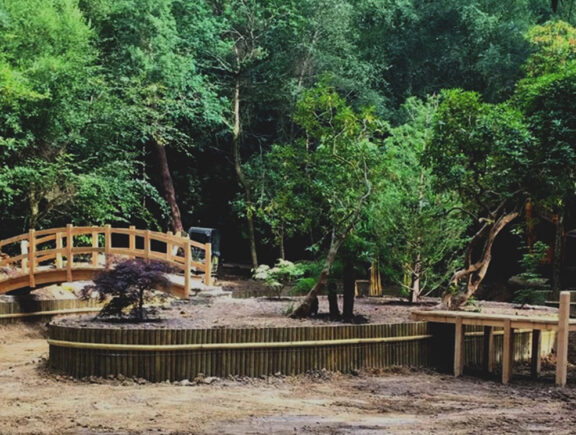After the team was mobilised to site and safe access provision was created, works began on selective pollarding and coppicing of small willows from adjacent non-SSSI flood meadows to obtain woody material to form the structure for the bank re-profiling. Wetland turfs, soil and gravel were excavated from the similar adjacent meadows via a small series of shallow scrapes. Coppiced trees create a thicker lower canopy and scrapes form a series of miniature ponds, both enhancing habitat opportunities for wildlife.
Channel planform improvements were completed by creating three angler-accessible marginal berms. The toe outlines were constructed with brash supported by stakes made from the locally won wood and reinforced using a combination of imported washed stone, which consisted of 40mm-75mm washed flint rejects, and the locally sourced grit and topsoil.
In total the team moved just over 4,500 square metres of material. Once complete, the width of the river section was reduced from between 15 and 20 metres to between 7 and 9 metres and consists of a more natural river bend formation. This will level out the riverbed and provide abundant suitable habitat for plants and wildlife, along with increased flood and drought resilience.
